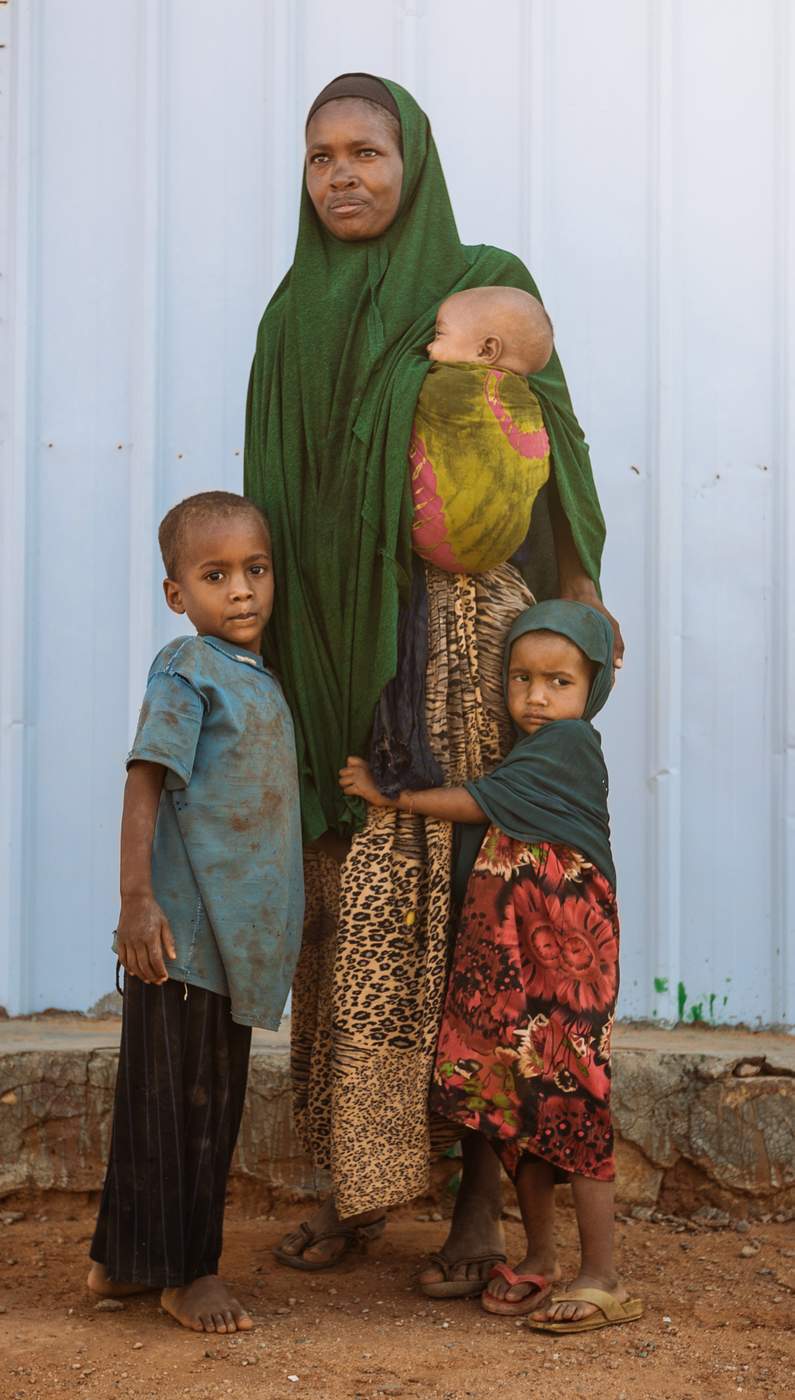Farhiya waits near a registration point in Doolow, alongside scores of women and children hoping to receive some kind of aid. She traveled 125 kilometers from her rural village of Elbon with three children under the age of six. The journey took six days to complete in temperatures above 40 degrees Celsius. They were a family of eight. Only four managed to reach Doolow. Farhiya had to leave her husband and three weaker children with relatives along the way.
Farhiya is among those who managed to travel from their rural towns. She previously lived in territory under the control of non-state actors.“It was difficult living under their rule. They would not let us run businesses or even allow us to beg for money,” she explained. “They would go around taxing people who had livestock to offer them. For us, we had so few animals that they did not even bother to take anything from us.”
“At least out here, we are safe.”
She is trying to reunite with her husband and other children before deciding where to go next. Having slept under the trees for the past four days, her situation is becoming more desperate as her children become increasingly malnourished. Her five-year-old son, Ali, is barely larger than his little sister Samira, who is only two years old.



